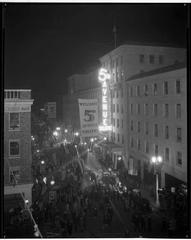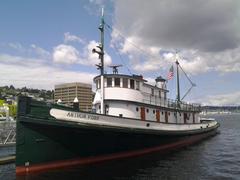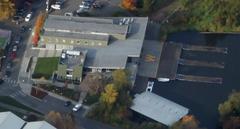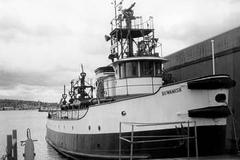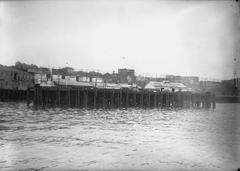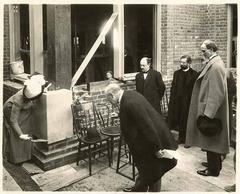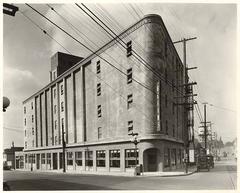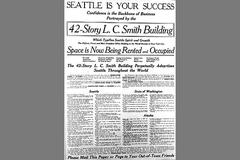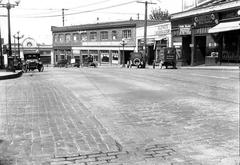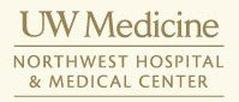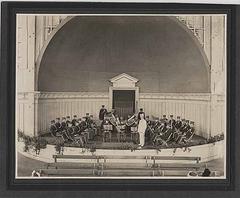
Hiram M. Chittenden Locks Seattle: Visiting Hours, Tickets, and Travel Guide
Date: 04/07/2025
Introduction to the Hiram M. Chittenden Locks
Situated in Seattle’s Ballard neighborhood, the Hiram M. Chittenden Locks—commonly known as the Ballard Locks—represent a fusion of historic engineering, natural beauty, and ecological stewardship. Since opening in 1917, these locks have connected Lake Washington and Lake Union’s freshwater with the saltwater of Puget Sound, dramatically shaping Seattle’s geography and maritime economy. The locks are renowned for their impressive engineering, vibrant gardens, and as a key site for observing Pacific salmon migration. Whether you’re a history buff, nature lover, or simply seeking a unique Seattle experience, this comprehensive guide provides everything you need to know for your visit—from practical details like hours and tickets, to historical context and visitor tips (U.S. Army Corps of Engineers Ballard Locks website, Seattle Magazine, Cascade PBS).
Table of Contents
- Historical Overview
- Visitor Information
- On-Site Highlights
- Frequently Asked Questions (FAQ)
- Tips for a Smooth Visit
- Summary
- Sources
Historical Overview
Vision, Construction, and Impact
The idea for a navigable waterway linking Seattle’s lakes to Puget Sound arose in the city’s early decades, driven by the needs of timber, coal, and shipping industries (Port of Seattle). Initial small canals proved inadequate, and by the early 20th century, support mounted for an ambitious canal and lock system. Brigadier General Hiram M. Chittenden of the U.S. Army Corps of Engineers led the effort, advocating for a robust lock facility at Ballard that could accommodate large commercial and military vessels (Filson Journal). After Congressional authorization and funding in 1910, construction began the following year and culminated with the locks’ official opening on July 4, 1917 (Wikipedia).
The locks instantly transformed Seattle, expanding its commercial waterfront from 4.5 to over 100 miles, lowering Lake Washington’s level by nine feet, and redirecting regional waterways (ASCE). The project’s engineering marvels included two parallel lock chambers and an advanced system to prevent saltwater intrusion—preserving the lakes’ freshwater and local ecosystems.
Economic and Social Significance
The Ballard Locks quickly became the nation’s busiest lock system, enabling efficient movement of both commercial and recreational vessels (Port of Seattle). They facilitated the growth of shipyards, marine services, and Seattle’s $670 million fishing industry (Seattle Times). The locks also provide essential flood control, water level management for Seattle’s floating bridges, and have spurred the development of vibrant waterfront communities.
Ecological and Cultural Impact
From the beginning, the locks’ design included a pioneering fish ladder, allowing salmon to bypass the man-made barrier and reach spawning grounds (My Ballard). While the construction affected traditional Duwamish fishing areas and altered regional ecosystems, today the site is a center for ecological education and restoration efforts, with tribes and environmental groups collaborating to support salmon populations (Cascade PBS).
Visitor Information
Visiting Hours
- Grounds and Fish Ladder: Open daily, 7:00 AM – 9:00 PM (Ballard Locks FAQ)
- Visitor Center: Open Wednesday–Sunday, May 1 to September 30, with seasonal hours (Recreation.gov). Always check the official website for updates, especially during holidays or special events.
Admission & Tickets
- Admission: Free for all visitors. No tickets are required for entry to grounds, fish ladder, gardens, or the Visitor Center (Recreation.gov).
- Tours & Events: Most guided tours are free. Special programs may require reservations; check in advance.
Accessibility
- The site is wheelchair accessible, with paved paths, ramps, and accessible restrooms (Ballard Locks FAQ). Service animals are welcome indoors; leashed pets are permitted in outdoor areas.
- Wheelchairs can be borrowed on a first-come, first-served basis.
Guided Tours & Educational Programs
- Free Tours: Offered daily at 2:00 PM (Visitor Center open days, May–September), lasting about an hour (Recreation.gov).
- Ranger Programs: Rangers and volunteers provide informal walks and Q&A sessions throughout the year.
- Argosy Cruises: For a water-based perspective, book a narrated cruise that passes through the locks (Seek Seattle).
Special Events
- Seasonal Highlights: Salmon Days Festival, summer concerts, and educational workshops (Friends of the Ballard Locks).
- Peak Salmon Viewing: Mid-June through October; check the fish ladder for Sockeye (July), Chinook (late August), Coho (late September), and steelhead (late winter) (Seattle Bloggers).
Nearby Attractions
- Carl S. English Jr. Botanical Gardens: Seven-acre garden with 500+ species (CityPASS).
- Golden Gardens Park: Beachfront with views of Puget Sound.
- Ballard Farmers Market: Fresh foods and crafts.
- Nordic Museum, Fisherman’s Terminal, and Ballard’s business district: Dining, shopping, and cultural experiences.
On-Site Highlights
Watching the Locks in Action
- Two lock chambers (large and small) operate in parallel, raising and lowering vessels as much as 26 feet.
- Over 40,000 vessels—commercial and recreational—pass through annually, making for lively viewing (Ballard Locks FAQ).
- Best vantage: walkways and bridges above the large lock.
Fish Ladder
- Specially designed to allow salmon and other fish to migrate upstream.
- Underground viewing gallery lets you watch salmon up-close as they navigate the ladder.
- Interpretive signage explains the salmon life cycle and restoration efforts.
Visitor Center
- Features interactive exhibits, historic photos, and films about the locks’ construction and operation.
- Staff and volunteers are available for questions.
- Restrooms and drinking fountains are nearby.
Carl S. English Jr. Botanical Gardens
- Beautiful landscaping with global plant species.
- Benches, picnic areas, and birdwatching opportunities.
- Summer concerts and community events.
Historic Structures
- 1916 Administration Building with historic architecture and displays.
- Salmon Bay Railway Bridge nearby—a working example of early 20th-century rail engineering.
Frequently Asked Questions (FAQ)
Are tickets required?
No. Admission to the grounds, fish ladder, gardens, and Visitor Center is free (Recreation.gov).
What are the visiting hours?
Grounds: 7:00 AM–9:00 PM daily. Visitor Center: Wednesday–Sunday, May 1–September 30. Check official site for seasonal variations.
Is parking available?
Yes, a paid city lot is adjacent to the locks. Spaces fill quickly on weekends and event days (Ballard Locks FAQ).
Are pets allowed?
Leashed dogs are welcome outdoors; only service animals are allowed inside buildings.
Is the site accessible for wheelchairs?
Yes, most areas, including the Visitor Center and viewing platforms, are accessible.
When is the best time to see salmon?
Peak salmon runs are in summer and early fall, varying by species (Seattle Bloggers).
Are there food or drinks available?
No vendors on-site. Bring picnics or visit nearby Ballard eateries (The Tourist Checklist).
Tips for a Smooth Visit
- Arrive early for easier parking and fewer crowds, especially on weekends.
- Dress in layers for Seattle’s variable weather.
- Bring binoculars for wildlife observation and a camera for photography.
- Follow posted signs and safety rules near the lock chambers and fish ladder.
- Walk bikes within the grounds; cycling is not allowed in the main area (Ballard Locks FAQ).
- Combine with nearby attractions like Golden Gardens Park or the Ballard Farmers Market for a full day out.
Summary
The Hiram M. Chittenden Locks are an enduring symbol of Seattle’s ingenuity, connecting past and present through a remarkable blend of engineering, ecology, and community engagement. Whether you’re enjoying the spectacle of boats passing through the locks, marveling at migrating salmon, or strolling through lush gardens, the Ballard Locks provide an accessible, educational, and unforgettable experience for all ages. Free admission, robust accessibility features, and a calendar of lively events make this historic site a top Seattle destination. Before you go, check the official Ballard Locks website for the latest updates, and consider downloading the Audiala app for exclusive tours and tips.
Sources and Further Reading
- Ballard Locks Report, 2018, Port of Seattle
- History of Chittenden Locks, 2023, Filson Journal
- Ballard Locks (Hiram M. Chittenden Locks), 2024, Wikipedia
- Lake Washington Ship Canal and Hiram M. Chittenden Locks, 2024, ASCE
- The Ballard Locks: Key to Seattle’s Maritime Infrastructure, 2025, Cascade PBS
- A Deep Dive Into Seattle’s Busy Beloved Ballard Locks, 2025, Seattle Times
- Ballard Locks Seattle, 2023, My Ballard
- The Ballard Locks (Hiram M. Chittenden Locks), 2024, Seek Seattle
- Ballard Locks Visitor Information, 2024, Recreation.gov
- Ballard Locks FAQ, 2024, Ballard Locks Official
- Ballard Locks Travel Tips, 2024, The Tourist Checklist
- Ballard Locks Visiting Hours and Tickets, 2024, Seattle Magazine
- CityPASS Ballard Locks Feature
- Seattle Bloggers: Best Time to Visit Ballard Locks
- Friends of the Ballard Locks Music Schedule
- Traveler Bibles: Best Time to Visit Ballard Locks







